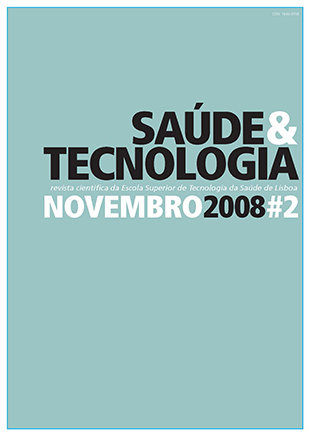Optimization of a drug simultaneous dissolution and permeability screening method
DOI:
https://doi.org/10.25758/set.144Keywords:
Bioavailability, Dissolution, Permeability, In vitro methodsAbstract
The goal of this research project was the optimization of a method for simultaneously screening the dissolution rate and the permeability of drug formulations across Polyvinylidene Fluoride membranes, using a bilateral flow cell. Initially, the effect of several variables was tested on caffeine and acetylsalicylic acid permeability. The obtained results showed that the method is more reproducible when the flow cell is used with the unilateral flow at the donor side and with stirring on the acceptor side. It was also showed that the method is able to detect the influence of pH (caffeine Papp at pH 7,4 and 4,5: 4,84±1,57x10-5cm.s-1 and 6,00±0,70x10-5cm.s-1; acetylsalicylic acid Papp at pH 7,4 and 4,5: 3,85±0,38x10-5cm.s-1 and 5,11±0,65x10-5cm.s-1) and excipients (Papp of isolated caffeine and in the presence of excipients: 6,76±1,22x10-5cm.s-1 and 5,84±0,43x10-5cm.s-1; Papp of isolated acetylsalicylic acid and in the presence of excipients: 7,07±1,56 x 10-5cm.s-1 and 5,19±0,23x10-5cm.s-1) in drug permeability. A dissolution medium with pH 4.5, defined in the United States Pharmacopeia (USP) for caffeine/acetylsalicylic acid tablets, was used. Another biorelevant method was developed using a dissolution media with pH 7.4 due to the future goal of testing drug permeability with Caco-2 cellular membranes. The dissolution percentages with this new media were 96,3% for caffeine and 87,1% for acetylsalicylic acid, higher than the 80% minimum limit described by the USP, making it possible to use this media in all the permeability assays. After the establishment of the isolated dissolution and permeability methodologies, the next step was the connection of both techniques. The dissolution/permeability assays were performed with a commercial pharmaceutical form containing both caffeine and acetylsalicylic acid (Melhoral®). The permeability results were reproducible and allowed discrimination between different media, opening therefore the possibility of its application in future works using cellular (Caco-2) or tissue (skin and intestinal) membranes.
Downloads
References
Chalchat B. [Current challenges for the pharmaceutical research industry]. Ann Pharm Fr. 1993;51(1):16–25. French
Kola I. The state of innovation in drug development. Clin Pharmacol Ther. 2008 Feb;83(2):227–30.
Corti G, Maestrelli F, Cirri M, Furlanetto S, Mura P. Development and evaluation of an in vitro method for prediction of human drug absorption I: assessment of artificial membrane composition. Eur J Pharm Sci. 2006 Mar;27(4):346–53.
Di L, Kerns EH. Profiling drug-like properties in discovery research. Curr Opin Chem Biol. 2003 Jun;7(3):402–8.
Artursson P, Palm K, Luthman K. Caco-2 monolayers in experimental and theoretical predictions of drug transport. Adv Drug Deliv Rev. 2001 Mar;46(1–3):27–43.
Corti G, Maestrelli F, Cirri M, Zerrouk N, Mura P. Development and evaluation of an in vitro method for prediction of human drug absorption II: demonstration of the method suitability. Eur J Pharm Sci. 2006 Mar;27(4):354–62.
Ginski MJ, Taneja R, Polli JE. Prediction of dissolution-absorption relationships from a dissolution/Caco-2 system. AAPS PharmSci. 1999;1(2):E3.
Motz SA. Combined assessment of dissolution and epithelial permeability of solid oral dosage forms [dissertation]. Saarbrücken: Universität des Saarlandes; 2007. Available from: http://deposit.ddb.de/cgi-bin/dokserv?idn=983385645&dok_var=d1&dok_ext=pdf&filename=983385645.pdf
Phang JS, Marsh WA, Barlows TG 3rd, Schwartz HI. Determining feeding tube location by gastric and intestinal pH values. Nutr Clin Pract. 2004 Dec;19(6):640–4.
He X, Kadomura S, Takekuma Y, Sugawara M, Miyazaki K. A new system for the prediction of drug absorption using a pH-controlled Caco-2 model: evaluation of pH-dependent soluble drug absorption and pH-related changes in absorption. J Pharm Sci. 2004 Jan;93(1):71–7.
Kobayashi M, Sada N, Sugawara M, Iseki K, Miyazaki K. Development of a new system for prediction of drug absorption that takes into account drug dissolution and pH change in the gastro-intestinal tract. Int J Pharm. 2001 Jun;221(1–2):87–94.
Sugawara M, Kadomura S, He X, Takekuma Y, Kohri N, Miyazaki K. The use of an in vitro dissolution and absorption system to evaluate oral absorption of two weak bases in pH-independent controlled-release formulations. Eur J Pharm Sci. 2005 Sep;26(1):1–8.
Jamzad S, Fassihi R. Role of surfactant and pH on dissolution properties of fenofibrate and glipizide: a technical note. AAPS PharmSciTech. 2006 Apr;7(2):E33.
Downloads
Published
Issue
Section
License
Copyright (c) 2023 Saúde e Tecnologia

This work is licensed under a Creative Commons Attribution-NonCommercial-NoDerivatives 4.0 International License.
The journal Saúde & Tecnologia offers immediate free access to its content, following the principle that making scientific knowledge available to the public free of charge provides greater worldwide democratization of knowledge.
The journal Saúde & Tecnologia does not charge authors any submission or article processing charges (APC).
All content is licensed under a Creative Commons CC-BY-NC-ND license. Authors have the right to: reproduce their work in physical or digital form for personal, professional, or teaching use, but not for commercial use (including the sale of the right to access the article); deposit on their website, that of their institution or in a repository an exact copy in electronic format of the article published by Saúde & Tecnologia, provided that reference is made to its publication in Saúde & Tecnologia and its content (including symbols identifying the journal) is not altered; publish in a book of which they are authors or editors the total or partial content of the manuscript, provided that reference is made to its publication in Saúde & Tecnologia.







